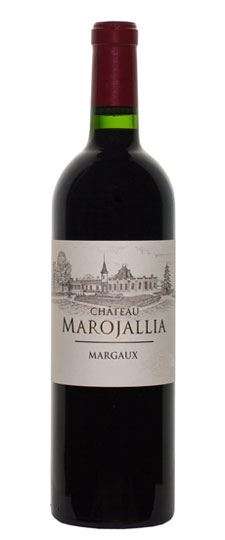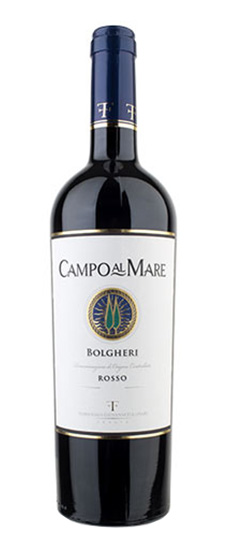Wine Score
Robert Parker’s Wine Advocate
The 2006 Proprietary Red H Block Hudson Vineyard offers spicy, chocolaty, menthol, burning ember, red and black fruit, asphalt, truffle, graphite, and oak characteristics. While this is an impressive offering, the tannins are more noticeable than they were last year, and the wine is more closed and backward.
The Arietta Wines
Arietta Red Wine H Block Hudson Vineyards is a blend of Cabernet Franc and Merlot. The Cabernet Franc is solely from the 2.3 acre Hudson Vineyards H Block, a shy-bearing, volcanic, southwest facing slope, which naturally yields just three tons per acre.
The Merlot is grown in the Hudson Vineyards G and I Blocks, which lie immediately below the H Block. Typically, the two varietals are picked simultaneously and co-fermented, assuring a marriage of the varieties. The Cabernet Franc provides the cassis, blueberry, brown sugar character, while the Merlot brings dark chocolate to the aroma and a chewy richness to the finish. Harvested near the extreme of ripeness, the wine is fermented with its indigenous yeast, macerated with the skins for six weeks, and then aged for twenty months in mostly new French oak barrels. Naturally clarified by traditional Bordeaux racking, the blend is bottled without fining or filtration. The intense concentration masks the substantial tannin, which assures an evolution in bottle of at least ten years.
Grape Variety
Bordeaux Blend Red Wine
A Bordeaux Blend, at its most basic, is any combination of those grape varieties typically used to make the red wines of Bordeaux. The phrase, which seems to have originated with British wine merchants in the 19th Century, relates as much to wines made from the blend as to the grape variety combination itself (© Copyright material, Wine-Searcher.com). Far from being an officially defined or legal term, it is almost never used for wine-labeling purposes (although it occasionally appears on back labels). Its equivalent in the United States is Meritage, which is not only legally defined, but also a registered trademark.
Red Bordeaux Blends are known for their powerful structure and deep flavors. Dark fruits and berries such as plum and blackcurrant are commonly used to describe the flavors of red Bordeaux, although there is an unlimited range of terms that have been ascribed to them. Tannins tend to be relatively high in these wines, giving them a firm structure.

Cabernet Sauvignon is widely accepted as a compulsory component of any Bordeaux Blend, with Merlot following close behind. In fact, the majority of Bordeaux Blend wines are often made exclusively from a blend of these two varieties. The remaining components are Cabernet Franc, Petit Verdot and Malbec, used in varying combinations and proportions. Even Carmenere is on the list of possible ingredients, despite being rarely used by modern Bordeaux vineyards (notable exceptions include Haut-Bailly, Brane-Cantenac and Clerc-Milon).
With the global wine industry expanding and developing at pace, the use of the term “Bordeaux Blend” is changing. Although a product of the Old World, it remains a useful concept, allowing the wine industry and enthusiasts everywhere to talk about Bordeaux-style red wines as an international group, irrespective of regionality.
Flexibility and a useful vagueness are key assets of the term “Bordeaux Blend”, but are also its Achilles’ heel; if it becomes too broad or too widely used it will lose its meaning. Is a Bordeaux Blend still a Bordeaux Blend if it contains Zinfandel, Sangiovese or Syrah? Without a formal definition to go by, the answer to that question lies entirely in the collective consciousness of those who use the phrase. Provided that Bordeaux’s vignerons don’t discover a new grape variety (Cabernet Sauvignon is only a few hundred years old), the term’s definition remains relatively clear.
The red Bordeaux style has reached almost every winegrowing country, with new candidates looking to emulate Bordeaux’s success. North and South America, Australia, South Africa and New Zealand all have their own expressions of the Bordeaux Blend. Even countries in North Africa and the Middle East produce their own interpretations of the style.
For more information on the various permutations of the Bordeaux Blend, please see Cabernet Sauvignon – Merlot, Cabernet Franc – Cabernet Sauvignon or Cabernet Franc – Merlot.
Food matches for Bordeaux Blend wines include:
- Steak entrecôte marchand de vin (red-wine sauce and shallots)
- Grass-fed wagyu rib-eye fillet
- Roast leg of lamb with rosemary and garlic
Region
Carneros Wine
(Los) Carneros is one of California’s oldest and most celebrated viticultural areas. It was first planted with grapes in the 1830s, and now ranks among the world’s top regions for Pinot Noir and Chardonnay, particularly when the two varieties are combined to make sparkling wines in the traditional method. (© Copyright material, Wine-Searcher.com)
The official Carneros AVA (created in 1983) covers an area of 90 square miles (230 square km) on the southernmost foothills of the Mayacamas and Sonoma mountain ranges. This location means the AVA is divided between America’s two most famous wine-producing regions – the eastern half in Napa, the western half in Sonoma. Many producers label their wines as “Carneros Napa Valley” or “Carneros Sonoma Valley”, depending on which side of the county line they are located.
The topography here – and the cool, windy mesoclimate it creates – is intimately connected with the style of wine produced here. As the mountains disappear (they drop down into San Francisco Bay before rising again in Contra Costa County), so does the protection they provide from the cold, wet winds which blow in from the Pacific Ocean, 30 miles (50km) west of Carneros. This gives Carneros a much cooler, wetter climate than that found further north in the sheltered valleys. This gap in the mountains is known as the Petaluma Gap, and its influence extends beyond Carneros into other AVAs including Sonoma Coast, Russian River Valley and even the southern end of Napa Valley.
This cool, windy, foggy mesoclimate proved extremely challenging for the early vineyard, particularly when combined with the combined effects of phylloxera and Prohibition. It was not until the late 1970s that the area’s vineyards began to achieve any consistent quality and recognition, long after the central Napa Valley had established its post-Prohibition wine industry. By the late 1980s, many hundreds of acres of vineyard had been planted in the AVA, and the reputation of Carneros wines began rising to its current glory.
Carneros’ winemakers were quick to realize the potential of their terroir for cooler-climate wine styles. Besides varietal Pinot Noir and Chardonnay, they also make high-quality sparkling wines from the two varieties. In the 1980s, Champagne house Taittinger chose Carneros as the location for its Californian presence (Domaine Carneros), at around the same time as Cava magnates Jose and Gloria Ferrer started their sparkling wine production here.
Carneros Pinot Noir has traditionally been lighter and tighter than those from other Californian regions, with notes of berries and herbs, rather than anything deeper and more opulent. This makes it particularly obvious when a winemaker has been over-enthusiastic with the use of oak. Likewise, Carneros Chardonnay is typically more elegant than other Californian Chardonnays, with crisper acidity and fresh stone-fruit aromas. It is easy to see why a fair proportion of the district’s grapes are purchased by wineries from warmer regions, for use in sparkling wines. These Burgundian varieties dominate the vineyards here, jointly accounting for around 90 percent of the total vineyard area. In warmer, sheltered spots, mostly on the Napa side of the AVA, they are sometimes joined by small quantities of Syrah, Cabernet Sauvignon and Merlot.
The wines below are from the Napa Valley side of the Carneros AVA. To see those from Sonoma’s portion of Carneros, please see Carneros – Sonoma.
Producer Notes
About Arietta Wines
Arietta Wines is a super-premium Napa Valley wine producer specializing in site-specific Bordeaux-style blends. The wines are produced with fruit from carefully selected blocks within some of Napa Valley’s best cool-climate vineyards, and are given names that relate to music, like On The White Keys, Quartet and Variation One. Since 2005, the wines have been made by consulting winemaker Andy Erickson, who is linked to notable Napa Valley wineries including Screaming Eagle, Staglin and Dalla Valle.
The estate was founded in 1996, and the first wine was produced from a mere hectare (2.3 acres) of Cabernet Franc from Hudson Vineyards’ H Block in Carneros. Arietta now sources fruit from additional blocks of Hudson Vineyards for production of Variation One, a blend of Merlot and Syrah, and Cabernet Sauvignon from small parcels in Howell Mountain and Coombsville has gone into Arietta’s largest production wine, Quartet, since 2003.
In 2005, Arietta produced its first and only white wine, On The White Keys, made from Sauvignon Blanc grown on hillsides in Sonoma Mountain and old-vine Sémillon from Hyde Vineyards in Carneros. The wines’ labels all feature the manuscript of renowned classical composer Beethoven’s Arietta movement from Opus 111, his last Piano Sonata.










